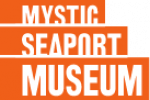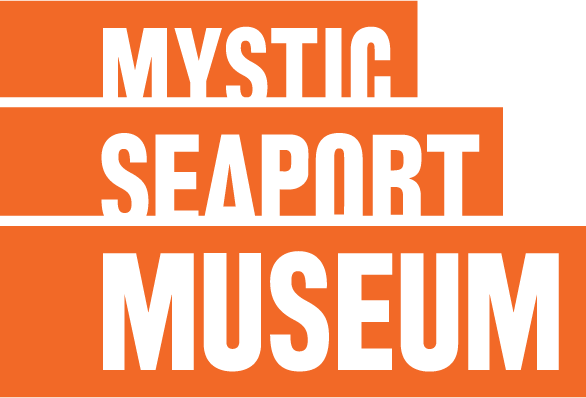
A Mystic Seaport crew raced in the 7th Annual International Whaleboat Regatta’s Dabney Cup in New Bedford on Sunday, September 8. The Azorean vs. Yankee Whaleboat Race featured three Azorean whaleboats racing against three American Beetle wooden whaleboats. These three boats were built to be on board the Charles W Morgan during the whaleship’s ceremonial 38th Voyage in 2014.
Mystic Seaport sent two boats and one crew to compete in the race. The boats were built by Gannon & Benjamin Marine Railway of Vineyard Haven, MA and Rocking the Boat of New York City. The Museum’s crew included Nathan Adams (steering), Susan Funk (stroke), Bror Okerblom (tub), Matt Porter (midships), Jesse Edwards (bow), and Lauren Barber (harpooneer). The third American boat that raced was built for the New Bedford Whaling Museum by the Beetle Cat Boat Shop of Wareham, MA. The Mystic Seaport crew came in fourth overall and was the first to finish among the Yankee boats.
Many traveled from Mystic to New Bedford to cheer on the Mystic Seaport crew, including Evelyn Ansel, a staff member who has been working on the Morgan restoration. Featured below is Ansel’s firsthand account of the race.
The Dabney Cup in New Bedford took place on a beautifully overcast morning–perfect for whaleboat sails reflecting sun against the dark sky. The idea behind the day was to test the Yankee whaleboats against their younger Azorean cousins, and American against Azorean crews. The two boat types aren’t really in the same class- the Azorean boats are longer, have an extra rowing station, and carry substantially more sail than their Yankee counterparts. Additionally, the Azorean boats are trimmer and narrower, reflecting the more modern shore-whaling practices in which they were beached through surf and often towed out to the whales by motorboats. They are excellent at going forward, fast, and straight. Not so good at turning, tacking, or beating to windward, particularly without centerboards. The Yanks, in comparison, are easier and safer handling (obviously a necessity as they doubled as lifeboats and tenders on long voyages), smaller as they had to be hauled up and down davits, rounder in the bilge, more pronounced in the sheer, also making them wonderfully seaworthy.
One unintentional, but very illuminating (and rather exciting), test of one shape against another presented itself when one of each type separately capsized mid-race; both rigs were removed and towed to shore on their own. The Azorean boat had to be towed in awash- couldn’t really be re-floated out on the water, but the American boat popped right back up once the rig was out and the crew got a couple of five-gallon buckets going. Although the crews were a little chilly and perhaps a little sore, it stirred quite a bit of excitement in the spectators ashore.
There was a significant crowd in attendance, maybe 150 people, perhaps nine full whaleboat crews and a pulling boat from one of the local rowing clubs, as well as numerous chase boats on the water. Portuguese was far and away the dominant language; we from Mystic were some of only a handful conversing in English. For the American teams, Mystic sent two boats and one crew, while the New Bedford Whaling Museum furnished one boat and two crews for a total of three Yankee boats. There were also three Azorean boats with extra crews.
The rowing race began at 9 a.m. It seemed more like two simultaneous races really, what with the extra hull length and extra oarsmen in the Azorean vessels–the Azoreans against themselves, the Yankees in the second heat. The race was simply a half-mile sprint. The Mystic boat came in 4th overall, 1st among the Yankee boats. The sailing race included several tacks roughly in a triangle, and the Mystic boat again came in 4th. The Azorean boats were brightly painted and fully equipped with paddles as well as oars, and watching them paddle out away from the beach I couldn’t help but be reminded of native American canoes (sometimes credited as forebears to the whaleboat) and pacific island dugouts. It was wonderful.
-Evelyn Ansel

